
Essential Spices for Indian Cooking – Absolutely Can’t Live Without These:
Coriander Powder
Cumin Powder
Turmeric Powder
Chili Powder
Garam Masala spice mixture
Cumin seeds
Cloves
Cardamom
Cinnamon bark
Fresh ginger
Garlic
When you think of Indian food, do you conjure up feelings/ideas of burning tongues, watering eyes and indigestion? I am here to convince you that Indian food does not have to be hot. Spicy – yes. Hot – no. There is a difference. You can have spicy food that is not hot on the tongue and will not cause distress to your digestion system!
I know that at our age, we are starting to develop insensitivities to certain foods and our stomachs and digestive system are not what they used to be. Almost all Indian recipes can be adjusted to be mild and still maintain their mouth-watering taste and look. I have a weak digestion system but can still enjoy delicious Indian food. If you are one of the lucky ones who can still handle hot and spicy food, go all out and enjoy! If you are not, and are like me, then just reduce the amount of spices used. A little goes a long way so you will still end up with fabulous food.
Indian food also uses some super nutritious ingredients that you have probably heard of. Ingredients such at ginger, turmeric, cumin, coriander and many, many more. Another reason to try them out!
The spices mostly come in two forms:
Spices Come in Two Forms:
- Powder
- Whole (seeds, pods, bark)
I am a second generation Indian (who was actually not born in North America) and was clueless about how to cook Indian spices and food until my mid-20s. I only knew that it was delicious and I loved almost everything my mother cooked for my brother and me. When I moved out on my own, my mother labelled jars with the names of the spices so I could learn what they were. Today, I know what they are blindfolded and just by smell. Happy to report that I can make almost everything she made for us growing up. I guess there would be something wrong if I couldn’t make most of the dishes by now!!
If you enjoy Indian food at restaurants, food courts or cuisine made by friends etc., I will show you how easy it can be to whip up a delicious Indian dish if you have the spices. You just have to take the first step and go out and get the spices
Spices are used for:
- Flavour
2. Nutritional properties
3. Aiding in digestion
4. Colour
5. Creating intoxicating aromas
Hey, I get it. Indian recipes use a lot of spices. They key is to have everything at your fingertips. I like to keep the open jars of what I need close by before starting so I am not going into various cupboards to grab things at the last minute. Spice containers containing seven individual bowls are commonly used by Indian cooks and help to keep the seven most common spices, whatever they may be in your household, together. Here is mine!


A little trip to an Indian grocery store will do the trick. You only need to go once and get everything you need. And voila, you are ready to cook delicious dishes for a while to come. Ask someone to help you gather everything to make things even simpler. Alternatively, you can order everything online if your city has an online Indian grocery store. Another option is to look for the spices in your favourite grocery store. Large stores carry many of the common spices these days.
Once you have everything, you are half-way there. So what are you waiting for! Make a list of what you need and take a trip to an Indian grocery store or ethnic market to grab the ingredients!
Must-Have Indian Spice Powders
*I have include the name of the spices in Hindi in case that helps you find them in ethnic grocery stores.
cumin (jeera)

Cumin is one spice you cannot escape if you plan to cook Indian food. It comes in seed form and powder. The intense smell and taste created by cumin is mouth-watering. You will use the seeds at the very beginning of recipes by frying them in oil. Some recipes called for roasted cumin. This takes a minute to make by dry frying the seeds in a pan. Once they change colour and become darker, they will release an even stronger smell. Cool down, grind and voila. You have roasted cumin seeds.
Special properties:
Antioxidant, anti-inflammatory, improves digestion, improves blood sugar and is rich in iron.
Coriander (Dhaniya)
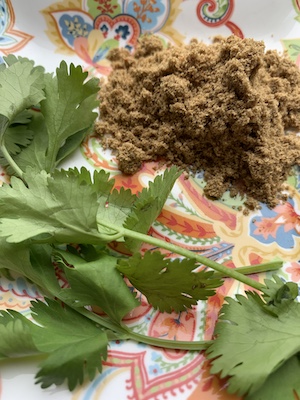
Coriander is another must-have spice. It also comes in seed form and powder but the powder form is more commonly used. Coriander is used in almost all savoury Indian recipes. Coriander leaves are used as a garnish and are a luscious addition atop almost all dishes. Keep it on hand!
Special properties:
The benefits of coriander are numerous! Benefits heart health, promotes digestion, improves immunity, reduces inflammation, fights urinary-tract infections, reduces cholesterol and helps reduce blood sugar.
chili powder (lal mirchi)
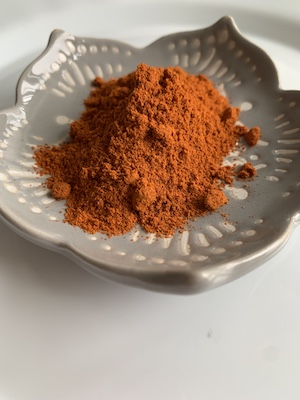
Chili powder is made from, you guessed it, powdered dry red chillies. This beautiful vibrant red spice adds hotness to dishes so treat with care. You can substitute with paprika or Kashmiri chili powder if you don’t have any on hand. Paprika adds a smoky flavour and Kashmiri chili powder is less “hot” and adds a bit of red colour to your dish.
Special properties:
Increases metabolism, helps reduce joint pain, burns fat, and strengthens the immune system.
turmeric (haldi)

Turmeric is a staple spice in the Indian kitchen. It offers great health benefits and a warm yellow glow to dishes. It can be purchased fresh (looks like ginger but smaller) or in powder form. It is very bright yellow in colour. Take special care when using as it can stain your fingers and clothes.
Special properties:
A power-house spice in terms of what it can do for you. It improves hearth health, may prevent Alzheimer’s and cancer, can be used to treat ailments involving pain and inflammation, helps reduce cholesterol.
garam masala (garam masala)

This is a widely used and famous spice mixture. You can buy it pre-made or make it yourself by grinding cinnamon, cardamom, cumin, coriander, pepper, nutmeg and bay leaves. The mixture varies by region but the packages found in the grocery stores are commonly used. Garam Masala is the Indian cherry on a cake. Sometimes used at the very end of the cooking process as a garnish.
Special properties:
Since Garam Masala is a blend of several spices, it has the benefits are the sum of all the individual spices. This mixture provides an overall boost to your health. It helps with digestion, boosts metabolism, high in antioxidants, fights bad breath, decreases the changes of constipation, just to name a few.
mango powder (amchur)
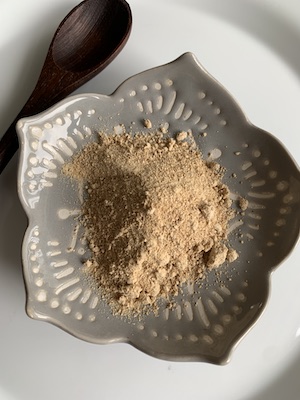
This aromatic powder is made from unripe green mangoes and adds a bit of a sour punch to dal soups, vegetable dishes and chutneys. Some people use is as a replacement for lemon juice.
Special properties:
Anti-oxidant, improves digestion, improves immunity, improves eyesight and improves cardiovascular health.
asafoetida (hing)
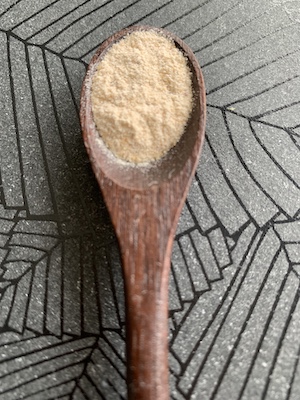
Extremely aromatic, asafoetida powder is used in hot oil its flavour and aroma is released.
Special properties:
Anti-inflammatory, antifungal, antifungal, helps lower blood pressure, helps with bloating and digestive disorders. Is also known to help with coughs, colds and asthma.
Must-Have Seeds, Pods, and Bark
cumin seeds (jeera)
*see write-up above for cumin powder
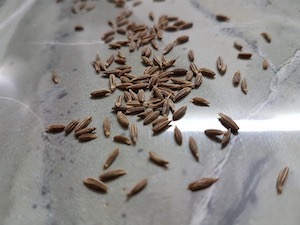
coriander seeds (dhanya)
*see write-up above for coriander powder

mustard seeds (rai)

These little gems come in three colours (black, yellow and brown). I mostly use the black ones. These little gems are packed with flavour especially when added to hot oil. You will end up using them in vegetable dishes, meat dishes and lentil soups (dals). Mustard oil is commonly used in vegetable dishes.
Special properties:
A nutrient called selenium in mustard seeds makes it highly anti-inflammatory, lowers blood pressure, provides relief for migraines, and aids in digestion.
cloves (laung)
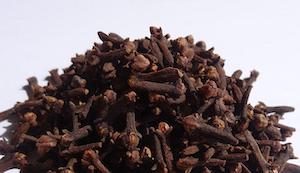
Cloves are small dried flower buds with a strong taste. Their spicy taste and aroma come out when used to temper oil. They are also crushed and added to spice mixtures.
Special properties:
Antioxidant, improves liver, blood and bone health.
cardamom pods (elaichi)
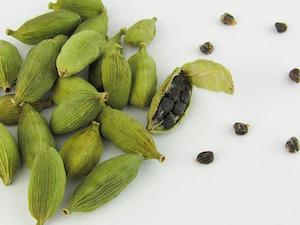
There are two types of cardamom pods available (black and green) but you will reach for the green ones most often. You will sometimes just crack open the pod and use it whole or open the pod and use the seeds inside.
Oh, how wonderful is the aroma when you pop one of these babies open! The fragrance is a beautiful and light. Cardamom is very versatile and is used in rich meat dishes, desserts and tea.
Special properties:
Anti-inflammatory and antioxidant properties, improve mouth health by fighting off bacteria, and improve liver health.
fenugreek seeds (methi)
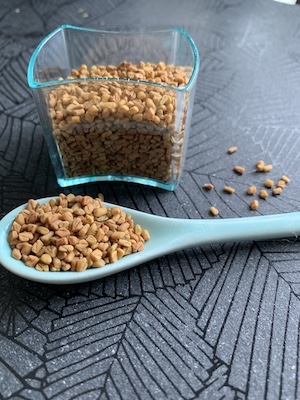
Fenugreek comes in the form of little yellow kernels. The dried leaves of the plant are also delicious in curries. Fenugreek offers a musky and slightly bitter flavour, which is very healthy. But don’t use too much or it will take over the flavour of the dish!
Special properties:
High fiber content, helps with digestion, lowers blood sugar levels, lowers cholesterol, helps with menstrual cramps (if you still get the monthly visit!), and soaked seeds can act as an antacid.
fennel seeds (saunf)

Another seed that looks like cumin seeds but is greener. Fennel seeds are used to flavour curries by adding them to hot oil as a tempering agent. It is also eaten after meals (chewed whole) as a digestive. As you know, fennel has a beautiful licorice flavour. You wouldn’t think that flavour would go with Indian food but believe me, it does. The powder found in most stores is made from first roasting the seeds and then grinding them. Some people chew the seeds after a meal to help with digestion.
Special properties:
Improves digestion, regulated blood pressure, bad breath, antioxidant and appetite suppressant.
caraway seeds (ajwain)

Caraway seeds also look a lot like cumin seeds but taste very different. Actually they are slightly curvier. Caraway seeds are less commonly used in Indian cuisine compared to cumin.
Special properties:
Helps with digestive issues such as gas, heartburn and bloating.
cinnamon bark (dalchini)
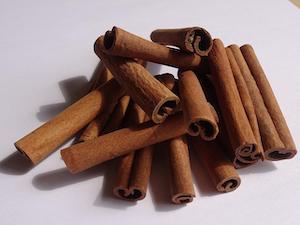
Cinnamon is used to temper oil and add smell to meat curries, lentil soups (dals), rice and vegetable dishes. The bark you will find in Indian grocery stores is called cinnamon but is usually actually cassia bark. You can buy them whole or in broken pieces.
Special properties:
Reduces blood pressure, lowers blood sugar, has anti-fungal, anti-bacterial properties, helps digestion.
black pepper (kali mirch)
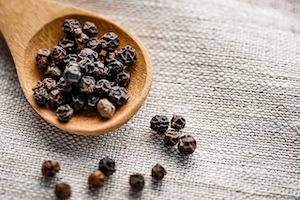
Ground pepper is commonly added to spice mixtures such as garam masala. Whole pepper is often used to flavour rice dishes. This is one of the most under-rated spices in my opinion and isn’t called the “King of Spices” for nothing.
Special properties:
Antioxidant, lowers cholesterol, anti-inflammatory properties, helps with digestion and immune system.
Other Common Ingredients Used in Indian Cooking
dried red chilies (sukha lal mirchi)
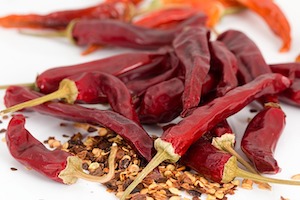
These are often used to temper oil and will up the hot factor in any dish!
Special properties:
Source of Vitamin C, antioxidant, and helps prevent heart problems.
bay leaves (tej patta)
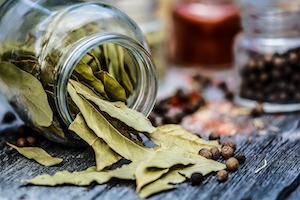
This dry leaf is used throughout the cooking process and removed just before serving. The leaf provides a mild aroma but interesting flavour.
Special properties:
Source of Vitamin A, C, Iron, Potassium, Calcium and Magnesium. Some people use them to treat migraines.
ginger (adrak)
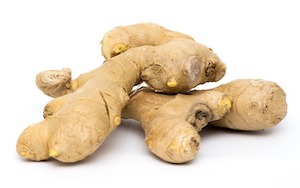
Many of you may not enjoy ginger but trust me, it is a must in Indian dishes that call for it. It is often paired with garlic. I either grate it on the spot or pre-grind and keep it in the refrigerator. Pre-grinding means you can just scoop how much you need and save time when you are in a hurry. It is used in almost all dishes and can be added to tea. I can’t imaging cooking without it!
Special properties:
Relieves indigestion, helps with cold symptoms, reduces nausea, and helps fight cold and flu.
garlic (lasun)

While not really a spice, garlic is an important ingredient in Indian cooking. As mentioned in the previous entry, garlic is often paired with Ginger.
Special properties:
Lowers cholesterol, lowers blood pressure, boosts immune system, lowers risk of heart disease to name some.
green chillies (hari mirch)
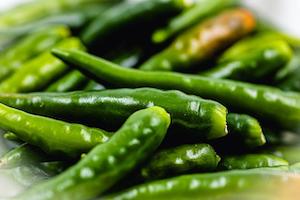
If you like hot, then you are in luck! If you prefer milder food, just omit. Simple as that. Green chilies add hotness and depth to dishes. The shorter, smaller Thai chilies are hotter than the longer ones typically found in grocery stores. I freeze them to keep them fresher for longer.
Special properties:
Help block absorption of cholesterol and contains Vitamins B and E. The capsaicin helps increase metabolism.
saffron (kesar)

These tiny stigmas of the crocus flower are an extremely expensive spice to harvest and therefore is only used in special dishes. You may not need to buy this one at the beginning of your Indian spice journey.
Special properties:
Antioxidant. So little is used in dishes so in all honesty, I use this only for flavour and appearance.
Ok, ready, set, go…!

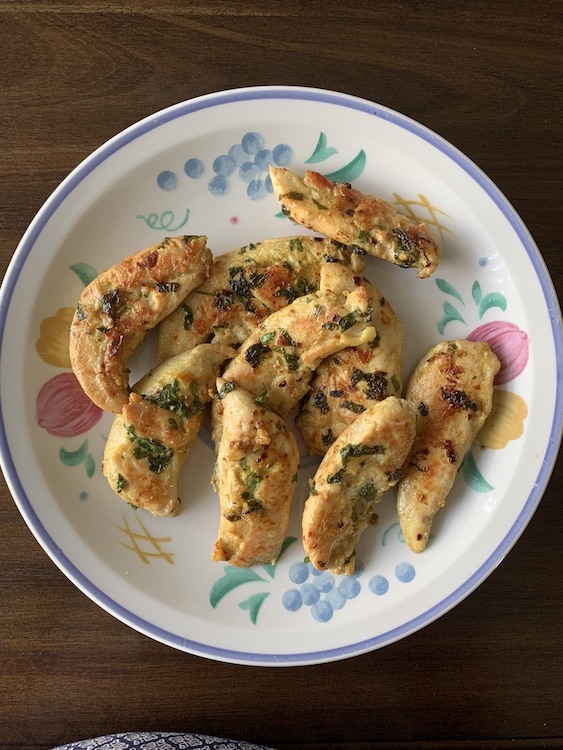
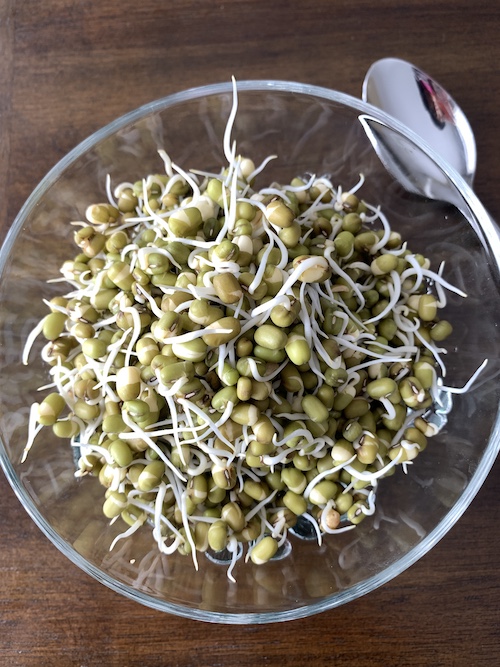
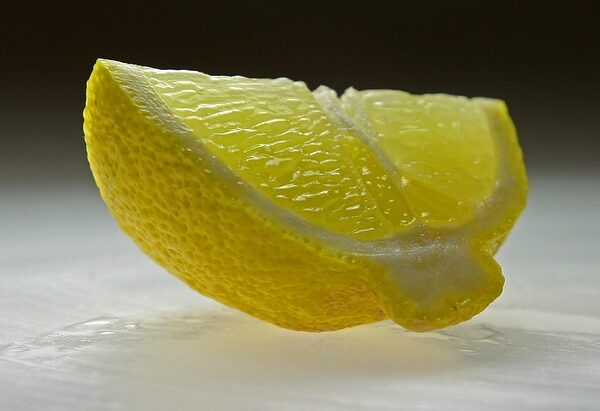

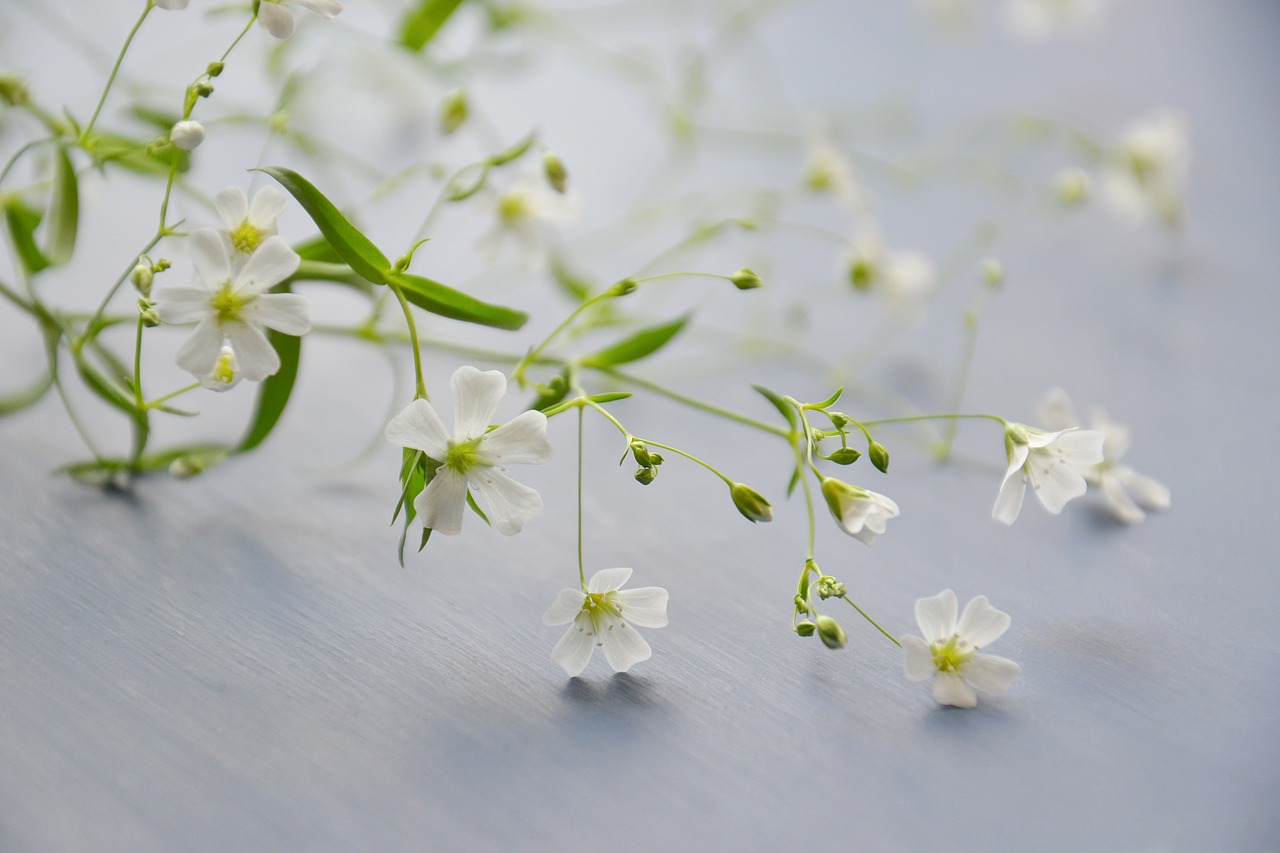
Leave a Reply